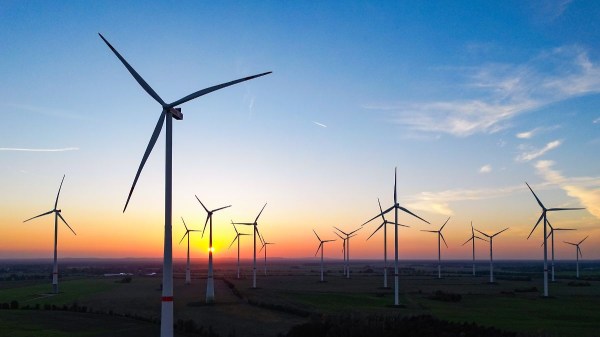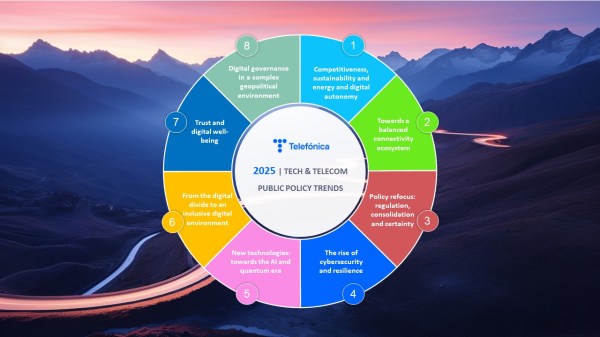The realisation of the need to care for the planet is moving forwards, albeit not always at the right speed, in favour of curbing climate change, making it essential to modify the course of the energy sector by granting a greater role to renewable energies.
The environmental costs of fossil fuels, external energy dependence and the creation of new economic activities are contributing to the interest in harnessing these kinds of energies.
What are renewable energies?
In other words, renewable energies are plentiful and can be found in any environment, while fossil fuels such as coal, oil and gas are non-renewable energy sources that take hundreds of millions of years to form.
Fossil fuels produce energy when they’re burnt, causing harmful emissions in the form of greenhouse gases such as carbon dioxide.
Therefore, the longer we delay the transition from fossil energies to renewable and clean ones, the more costs we’ll incur in economic, ecological and social terms, because renewable energies are the most economical, environmentally and socially responsible, equitable and fair option for the conservation of our planet, as highlighted by the UN.
Are all renewable energies clean?
There exists an impression that all renewable energies are clean, in other words, they don’t pollute, but this isn’t entirely true, as there are some, very few, that do pollute.
One example is biodiesel, which is renewable because it comes from inexhaustible natural sources, but, unlike most renewable energies, it pollutes during its combustion, emitting greenhouse gases.
Many experts therefore opt for the concept of green energy, in other words, energy that’s 100% renewable but also non-polluting. This is a kind of energy in which digitalisation and the new technological tools very much come into play.
Kinds of renewable energies
Renewable energies are chiefly divided into the solar, wind, hydraulic, geothermal, biomass and ocean kinds.
- Solar energy: this is obtained from radiation from the sun. It can be of two kinds: photovoltaic, when the sunlight is gathered and transformed into electricity through the use of photovoltaic solar panels, and thermal, when the heat from the sun is harnessed by means of thermal collectors that absorb and concentrate it.
- Wind energy: this is obtained by transforming the kinetic energy of the wind into electricity. It may be of two kinds, depending on where the wind turbines are located. Onshore wind energy uses the air currents produced on land, while offshore wine energy uses the power of the wind produced offshore.
- Geothermal energy: this energy uses the thermal energy available in the Earth’s interior. The heat is extracted from geothermal reservoirs through wells and by other means.
- Hydroelectric power: this harnesses the energy produced by the movement of water when it rises or falls sharply. It can be generated by using reservoirs and rivers. The hydroelectric plants at reservoirs make use of stored and standing water, while hydroelectric plants on rivers use the energy produced by the flow of the water.
- Energy from the sea: marine energy, also called ocean energy, may be of several kinds, chiefly tidal energy, which harnesses the rise and fall of the tide, and wave energy, which takes advantage of the movement of the waves.
- Bioenergy or biomass: bioenergy comes from different organic materials known as biomass, such as wood, charcoal, manure and other fertilisers used for heat and electricity production, as well as agricultural crops for liquid biofuels. The energy created by burning biomass forms greenhouse gas emissions, albeit at lower levels than when fossil fuels are burnt.

Renewable energies around the world
The latest data published by the International Renewable Energy Agency (IRENA) for 2021 show that renewable energies are continuing to grow and gain momentum despite the global uncertainties.
Thus, by the end of 2021, the global renewable generation capacity amounted to 3,064 gigawatts (GW), thus increasing the renewable energy stock by 9.1%.
The inter-governmental agency explains that although hydroelectric energy, with 1,230 GW, accounted for the largest share of the total global renewable generation capacity, IRENA’s 2022 Renewable Capacity Statistics show that solar and wind are continuing to predominate in new generation capacity.
Solar and wind energy accounted for 88% of the share of the total new renewable capacity in 2021. Solar energy capacity led the way, with an increase of 19%, followed by wind power, whose generation capacity rose by 13%.
Despite these data, IRENA Director-General Francesco La Camera points out that the energy transition “falls far short of the levels required to prevent the serious consequences of climate change”, as shown in the Global Energy Transition Outlook report,
In fact, during the recent presentation of the State of the Climate Report by the World Meteorological Organisation (WMO), which contains new data fuelling pessimism, UN Secretary-General António Guterres called on public and private players around the world to triple their investments in renewable energies to at least 4 billion dollars per year.
“It’s time for public and private leaders to stop talking about renewables as a distant project for the future, because without them there’ll be no future”, declared Guterres.
Renewables in Spain
In Spain, too, there’s been a continuous increase in renewable energy generation, according to the data in the 2021 report published by Red Eléctrica Española, which indicates an all-time high for renewable production.
These data show that, last year, renewables accounted for 46.7% of electricity generation, compared with the figure of 44% in 2020. In this respect, wind power is now the main source of electricity generation, with a 23.3% share of total electricity
production in Spain.
Moreover, solar photovoltaic energy is leading the upturn in production with a rise of 36.7% and a record high in terms of production and participation
in the country’s mix, with 8% of the total.
In 2021, the installed capacity stood at 112,846 MW, 56.6% of which corresponded to renewable technologies.
The share of mainland electricity generation as a whole rose from 45.5% in 2020 to an all-time high of 48.4% in 2021. By technologies, wind power accounted for 24% of total electricity production, followed by hydraulic and solar photovoltaic energy, with 12% and 8.3% respectively.
It should be borne in mind that the historical high of energy dependence on fossil fuels in Spain occurred in 2008, with a percentage of 81.3%.
The most significant data for 2021 include coal, which in 2021 recorded its lowest historical production and its lowest share of the national generation structure, with 1.9% of the total.
The “Repower EU” Plan
Russia’s invasion of Ukraine and Europe’s energy dependence have obliged the European Commission to consider modifying its energy targets, established last year in the “Fit for 55” plan.
Through the Repower EU programme, the Commission is seeking to break away from its dependence on Russia for energy, although this will involve extending the life of coal-fired power plants and building new nuclear power stations.
The Commission estimates that the Community’s energy mix in 2030 will include an additional 100 terawatt-hours of coal and a further 44 terawatt-hours of atomic generation.
However, there will also be a massive investment in clean energies, with 86,000 million euros assigned to renewables and 27,000 million euros for “key” green hydrogen infrastructures.
In fact, the plan raises the renewable energy target to 45% from the current 40% and the energy efficiency goal to 13%, four points above the present-day figure.
The above will involve a race to avoid destroying the planet in which renewable, green and clean energies will have a key role to play, in order to keep on cornering fossil fuels as part of a crucial task for human beings, namely to combat climate change.










